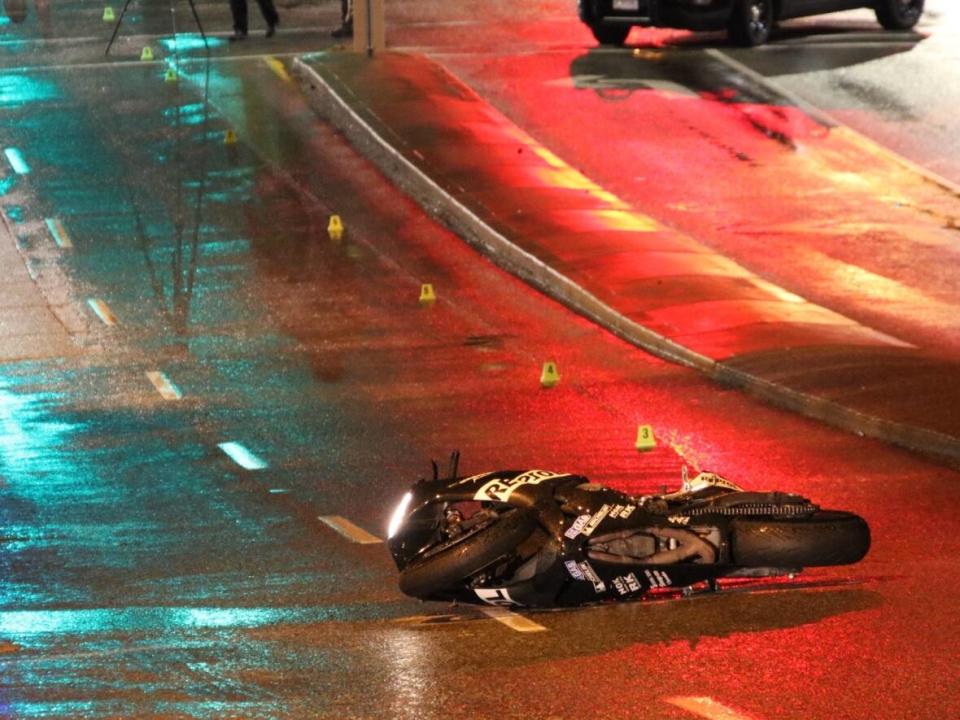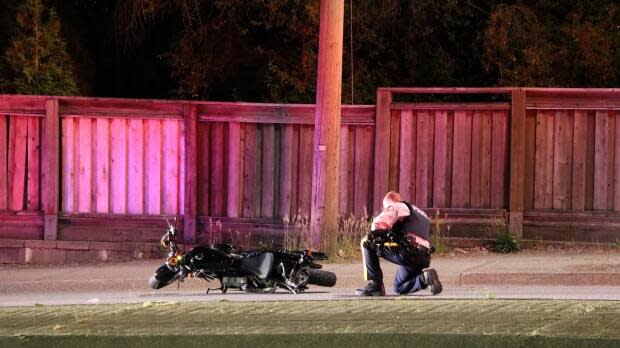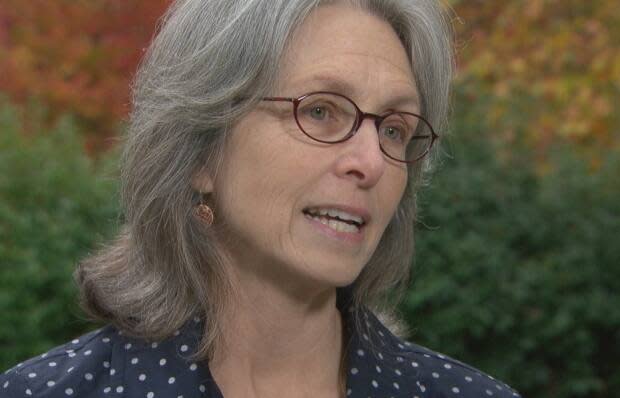B.C. needs to rethink road design to prevent motorcycle deaths, traffic safety specialist says

A recent string of motorcyclist deaths in British Columbia has prompted some families, riders and motorcycle safety organizations to call for increased safety training for motorcyclists and drivers alike.
But some specialists caution there are limits to how much education and awareness can save lives.
At least six motorcyclists have died so far this year in B.C., with Surrey registering its fourth motorcycle fatality Tuesday, according to ICBC and the RCMP.
That's about the same as this time in 2021, according to the B.C. Coroners Service.
Some safety professionals say proper training hasn't kept up with rising motorcycle sales during the pandemic, and new riders are particularly at risk.
"We have a lot of new riders on the road who might not necessarily be as trained as they would have been during a non-pandemic.
"And so that's part of the reason why we're seeing more fatalities just from the sheer number of new riders on the road," said Steve Reed, the co-founder of BikerDown Canada, a nonprofit that trains motorcyclists and others to safely respond to accidents before first responders arrive.

Motorcyclists account for about four per cent of the vehicles insured by ICBC but approximately 14 per cent of claims, according to the insurer.
Riders are smaller and move quickly, making them hard to see even when drivers are looking, said Reed.
"As car drivers … we're actually not seeing everything consistently, our minds fill in the gaps, and so a motorcyclist can get lost," Reed told CBC. "And when something's moving that's small against the static background, like a motorcycle coming down a road, we don't perceive it as well."
Riders can also make themselves more visible by wearing high-visibility strips on their clothing of a single colour, like bright green or orange, that contrasts with their surroundings, said Reed.
Carol Fedor, the general manager and lead instructor at ProRide Motorcycle Training, says new and seasoned riders alike could benefit from safety lessons.
"We've educated many people who have been veteran riders … and at the end of the day, they're like, 'Wow, I'm so glad I took that because I forgot,'" Fedor told BC Today on Wednesday. "The more education you have, the better it is."
Both Fedor and Reed stressed that road maintenance and proper signage near obstructions like potholes help rider awareness.
WATCH | Motorcycle and traffic safety experts discuss road safety for motorcyclists:
'Most dangerous by far'
Public education and individual vigilance aren't enough on their own to keep the road's most vulnerable users safe, says one traffic safety expert.
Motorcycles are the "most dangerous" mode of transportation because they combine the speed of vehicles with the vulnerability of bikes and pedestrians, says Kay Teschke, a professor emeritus at the University of British Columbia's School of Population and Public Health who studies traffic deaths from a public health perspective.
"As far as enforcement and education and so on, they can only go so far when you're driving in a dangerous situation," she said.
The Surrey intersection on Fraser Highway and 168 Street, where a rider died on Tuesday, had several mixed-use lights for turning and continuing straight, fast right turn lanes and high speeds, which is typical of intersections in Metro Vancouver, she said.

Dedicated turning lights, implementing right turn lanes that require vehicles to stop and lowering speed limits all help avoid crashes and keep traffic flowing, said Teschke.
And success by Sweden and other Nordic countries in reducing road fatalities through design shows decisive action in B.C. can still save lives here, she added.
"I hope we'll have more courage and also see more of our traffic engineers take responsibility for deaths on the road," she said. "It will help people in motor vehicles. It will help people walking, it'll help people biking. It'll help everyone."

 Yahoo Sports
Yahoo Sports 